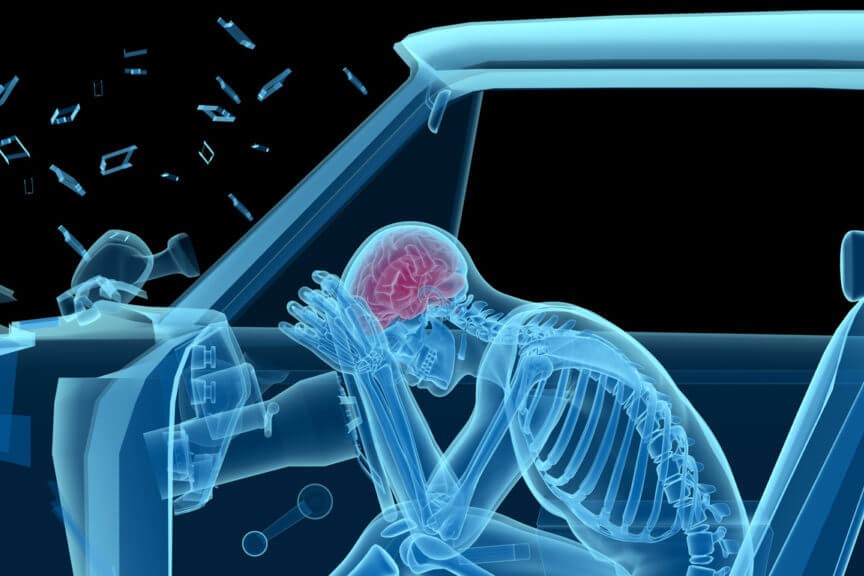
What is Traumatic Brain Injury (TBI)?
Traumatic brain injury is an injury to the brain from some type of force or trauma to the head
Left untreated, it can cause problems with brain function and lead to serious physical, mental, and behavioural changes.
Everyone suffering from TBI should receive timely and effective first-aid care before further medical help is available.
Understanding Traumatic Brain Injury
A traumatic brain injury (TBI) refers to damage to the brain caused by an external physical force.
It may happen from a sudden blow, jolt, or trauma to the head or an object penetrating the brain.
When the brain suffers from these injuries, the person may experience a change in consciousness that can range from mild disorientation to something more severe such as slipping into a coma.
In some instances, the person may experience memory loss immediately after the event that causes the injury.
Other common events that may result in TBI include falls, road collisions (car accidents), violence, sports injuries, explosive blasts, or other combat injuries.
Understanding traumatic brain injury, including its symptoms and treatment, will reduce risk and improve management for people suffering from TBI.
Signs and Symptoms of Traumatic Brain Injury
The symptoms may vary greatly depending on the severity of the brain or head injury.
Common signs and symptoms may include:
- Headache
- Nausea or vomiting
- Fatigue or drowsiness
- Problems with speech
- Sensory problems (blurred vision, ringing in the ears, changes in the ability to smell, etc.)
- Dizziness or loss of balance
- Loss of consciousness for a few seconds to a few minutes
- Confusion or being disoriented
- Memory or concentration problems
- Mood changes or mood swings
Take note that these symptoms may appear within the first hours of the injury, while some symptoms may appear after a few days.
If you suspect a TBI, call Emergency Number and perform first aid while waiting for emergency personnel to take over.
First Aid Treatment
Administer the following first aid steps in a traumatic brain injury while waiting for emergency medical help to arrive.
- Assess the victim
Check the person’s airway, breathing and circulation.
Keep them still by stabilising their head and neck by placing your hands on both sides.
Keep it in line with the spine and prevent any movements to avoid further damage.
- Stop any bleeding
If there is any bleeding involved, stop the blood flow by firmly pressing a clean cloth or bandage to the wound.
Do this unless you suspect a skull fracture.
If a skull fracture is suspected, avoid applying pressure to the head.
Instead, cover the wound gently with a sterile gauze dressing.
- Perform CPR
Monitor their condition and look closely for any significant changes in breathing and alertness.
If the person appears to have difficulty breathing or has no signs of breathing at all, begin CPR right away.
Some people should always seek medical care after any type of head injury because they are at greater risk.
These include children, the elderly, and people with underlying medical conditions.
(First Aid Note: Use the terms ‘mild’ ‘moderate’, or ‘severe’ when describing the effect of the injury on the person’s brain function. A mild brain injury is still considered serious and requires prompt first aid and emergency attention.)
Read Also:
Emergency Live Even More…Live: Download The New Free App Of Your Newspaper For IOS And Android
Quick And Dirty Guide To Chest Trauma
Pathophysiology Of Thoracic Trauma: Injuries To The Heart, Great Vessels And Diaphragm
Cardiopulmonary Resuscitation Manoeuvres: Management Of The LUCAS Chest Compressor
Chest Trauma: Clinical Aspects, Therapy, Airway And Ventilatory Assistance
Precordial Chest Punch: Meaning, When To Do It, Guidelines
Ambu Bag, Salvation For Patients With Lack Of Breathing
Blind Insertion Airway Devices (BIAD’s)
UK / Emergency Room, Paediatric Intubation: The Procedure With A Child In Serious Condition
Tracheal Intubation: When, How And Why To Create An Artificial Airway For The Patient
Endotracheal Intubation: What Is VAP, Ventilator-Associated Pneumonia
Sedation And Analgesia: Drugs To Facilitate Intubation
AMBU: The Impact Of Mechanical Ventilation On The Effectiveness Of CPR
Manual Ventilation, 5 Things To Keep In Mind
FDA Approves Recarbio To Treat Hospital-Acquired And Ventilator-Associated Bacterial Pneumonia
Pulmonary Ventilation In Ambulances: Increasing Patient Stay Times, Essential Excellence Responses
Microbial Contamination On Ambulance Surfaces: Published Data And Studies
Ambu Bag: Characteristics And How To Use The Self-Expanding Balloon
Anxiolytics And Sedatives: Role, Function And Management With Intubation And Mechanical Ventilation
Bronchitis And Pneumonia: How Can They Be Distinguished?
New England Journal Of Medicine: Successful Intubations With High-Flow Nasal Therapy In Newborns
Intubation: Risks, Anaesthesia, Resuscitation, Throat Pain
What Is Intubation And Why Is It Done?
What Is Intubation And Why Is It Needed? Insertion Of A Tube To Protect The Airway
Endotracheal Intubation: Insertion Methods, Indications And Contraindications
Airway Management: Tips For Effective Intubation



